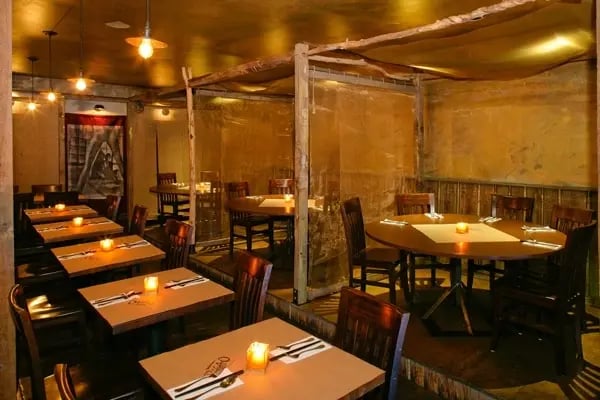5 Innovative Hotel Design Trends That Are Set to Grow in 2023 and Beyond

The hospitality industry made a stellar recovery after the pandemic as more people started to see the importance of traveling and exploring. However, the imposed break allowed designers and hotel owners to discover new ways to help people feel safe and welcome while on their premises.
As a result, you can see a clear shift in hotel design trends based on the idea that we all need personal space and relaxation when traveling. Plus, architects and interior designers seem to focus more on environment-friendly structures that help integrate nature into the daily life of a hotel dweller.
From a design perspective, the industry is changing, and we’re here for it. Hospitality managers use Sweeply to stay ahead of these innovative hotel design trends, ensuring that their staff can efficiently maintain and manage the new environment-friendly structures, providing a safe and welcoming experience for guests. Below, you can find some of the most common innovative hotel design trends expected to grow this year.
1. Glamping Becomes Mainstream
Glamping used to be a niche trend that seemed like it was created for Instagram influencers who couldn’t do real camping. However, after a couple of years of mostly staying indoors, people are a lot more interested in being outside and connecting with nature.
Still, not all people can camp in a traditional tent, which is how glamping revamped itself and became the best option for those who want comfort and nature in one package. Besides being a great way to spend time outdoors, most glamping locations are surrounded by jaw-dropping scenery that looks amazing in your vacation pictures.
Plus, if you want to spend your honeymoon or other significant celebration in a luxury-like location without breaking the bank, glamping-like accommodation is the perfect option. You can relax and reconnect with nature and take stunning pictures that you can later turn into photo books, invites, or personalized gifts for your loved ones (at Mixbook, you can find a wide range of ideas).
2. Green Spaces for Luxury Hotels
As the generations shift and Millennials and Gen Zers come into focus, the traveling and lodging trends also change. As such, luxury hotels are more involved in creating manicured green spaces in the lobby and common areas.
Moreover, whenever possible, hotels invest in creating beautiful gardens where guests can relax and reconnect with the outdoors. While luxurious gardens are nothing new, especially for high-end accommodations away from the city's noise, the trend is quickly growing in popularity among resorts everywhere. That’s because the newer generations of travelers are more interested in authentic experiences than ever.
3. Focus on Art and Local Culture
On the same note, younger tourists (Millennials and Gen Zers) like hotels where they can connect with the local culture and art. Therefore, one of the new design trends that are taking lift-off is to use local artwork and promote local artists in the hotels' interior design.
This way, even if you stick with the same hotel brand in different locations, the experience will be unique each time. Designers understand this need for authentic experiences, so they tend to use bold colors that evoke the essence of the location.
4. Work & Vacation in the Same Place
As more companies learn to include remote work in their approach to the work environment, people can combine work and travel. Therefore, many professionals are looking for hotels that provide areas for leisure and work.
To satisfy this increasing trend, some hotels focused on designing bigger guest rooms, which included fitness areas and a spa-like bathroom area. Other hotels opened up common areas (like conference rooms or event venues) where professionals can work or take business calls. This way, the work area is separated from the leisure area, so people can still feel like they are on vacation.
Other hotels have expanded their fitness center to include yoga spaces. A recurring theme is communal spaces for health and wellness, such as group meditation rooms and areas for optional group health and exercise classes.
5. A Need for Connection and Connectivity
Humans are social beings who crave connection with their peers, and nothing made us feel this need more than the isolation times during the pandemic.
To try and recover the lost time, today’s consumer is more focused on connecting with others and sharing their thoughts and experiences. And hotels can benefit from this trend by creating more areas dedicated to socialization among travelers.
Plus, some hotels took this one step further and found ways to reinvent their programs and exclusive memberships and turn them into opportunities to participate in interesting events and meet like-minded people.
Wrap Up
The current hotel design trends include green spaces, a focus on connecting with nature, and authentic experiences that promote local art and culture. Plus, hotels will no longer focus on rooms alone. To keep guests interested, they’ll have to up the ante with spaces dedicated to working and socializing.

Anuj Srivastava
Anuj Srivastava is a principal partner at NY Engineers. He is known for his MEP franchise market knowledge. Anuj is currently leading a team of 100+ MEP/FP engineers and has successfully led over 1500 franchise projects in the US.
Join 15,000+ Fellow Architects and Contractors
Get expert engineering tips straight to your inbox. Subscribe to the NY Engineers Blog below.


